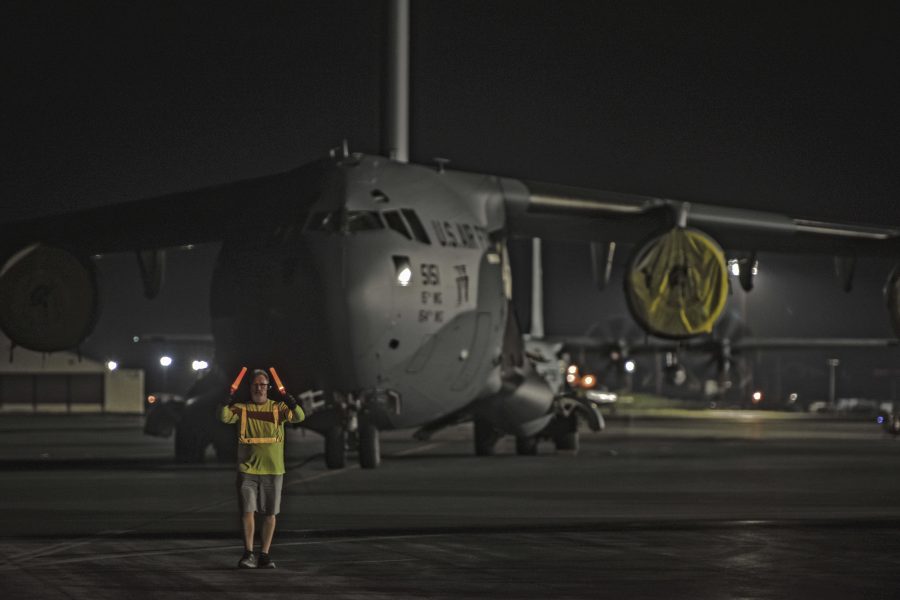COVID-19’s impacts on Air Mobility Command operations, which increased as the pandemic spread, have provided several lessons learned that mobility forces can use for potential ops in degraded conditions, the command’s boss said.
AMC Commander Gen. Jacqueline D. Van Ovost, speaking during AFA’s virtual Air, Space & Cyber Conference, said the pandemic is the first “thorough contested environment” that mobility forces have faced. The pandemic forced aircrews and commanders to think differently about how to get their mission accomplished.
“From our personal front door all the way to the foxhole, we had unforeseen limitations on things that, frankly, we had taken for granted,” Van Ovost said.
For example, mobility squadrons had to quickly find ways to clean and prep aircraft, while also quarantining and keeping pilots safe to meet operations that did not relent. The command studied airflow on its airplanes to determine how to safely carry passengers, and even developed a new isolation system within 90 days that could carry more COVID-19 patients than the existing Transport Isolation System.
The command increased its coordination with private contractors to respond to urgent missions, such as bringing back U.S. citizens who were stranded abroad or handing off COVID-19 testing supplies that were flown in from Italy and transferred to FedEx.
One of the biggest lessons learned from early in the pandemic was the idea of access, and which countries could host U.S. assets and which wouldn’t. During the pandemic, some countries shut off their borders. In a conflict, countries could shut out the U.S. military, forcing the Air Force to find other ways to fly and operate abroad.
“One of the lessons learned operating globally in this pandemic was the importance of access and the necessity to prepare for essentially a rapidly changing global environment … During a conflict, you would have different nations involved in the conflict and how things could change politically,” she said. “We see some real relationships here between the two.”
To get around this, AMC relied heavily on industrial carriers who have established partnerships with other countries and more flexibility to bring in aircraft other than a military “gray tail.”
“Our commercial carriers, … actually acted as sensors for us in some of the areas we had not been in, or frankly, they just have more reps and sets going through that airspace or into that nation,” Van Ovost said.
Within the continental United States, AMC shifted its operational plans to meet regular requirements, such as presidential support. At one point, COVID-19 hit the Joint Base Charleston, S.C., community pretty hard, so West Coast-based C-17s picked up more of the load, ensuring airlifters were always available. “We’ve had to balance our readiness in different areas,” she said.
Going forward, “We’re not putting anything out of that on the shelf,” she said. “We’re taking those lessons learned forward into all kinds of environments, from the contested all the way to the high end.”
“There’s no telling what the next contested environment is, and this pandemic has just laid that one out in spades,” she said.
